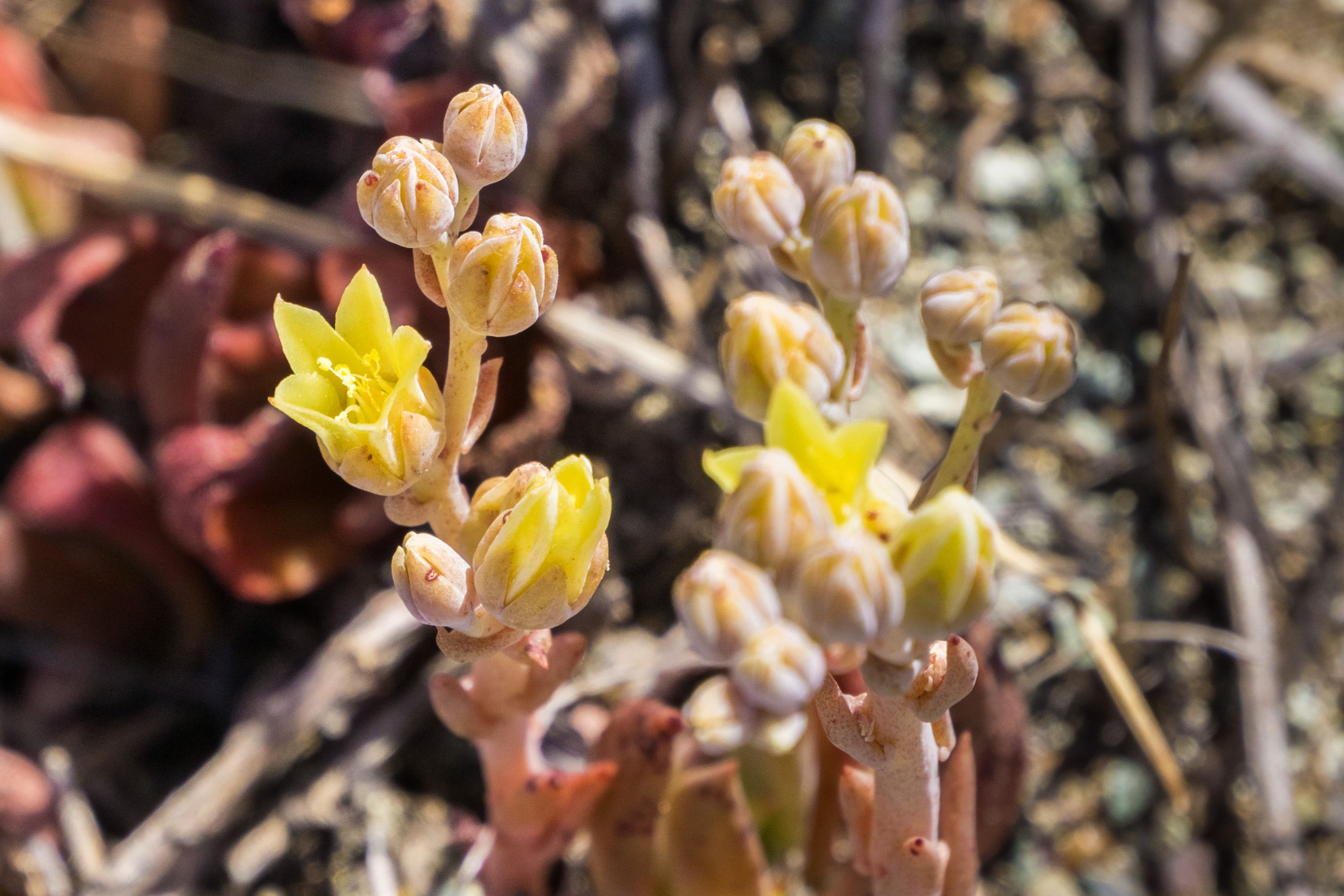Abrams' Liveforever
(Dudleya abramsii)

Description
Dudleya abramsii is a species complex of succulent plants native to California and parts of Baja California. There are numerous subspecies, some critically endangered, with varying habits and lifestyles, but most often characterized by a smaller size, yellow flowers, and an affinity for rocky habitats. The subspecies may be polyphyletic. Dudleya abramsii is a fleshy perennial forming a small basal cluster of leaves around a central caudex. The habit of Dudleya abramsii is growing in either solitary rosettes or in caespitose forms. The thick, glaucous leaves are lance-oblong to lanceolate, reaching up to 11 centimeters in length, but often remaining much smaller, usually 2 to 30 mm long, and 3 to 20 mm wide. The entire rosette is generally only 0.5 to 15 cm wide. The inflorescence is a mostly erect, branching stem lined with pointed bracts and bearing up to 15 flowers. The inflorescence has a peduncle 2 to 25 cm tall, and 1 to 6 mm wide. The lower bracts are 4 to 40 mm large, and the pedicels are anywhere from 0.5 to 7 mm long. The flower has five small, thick sepals at the base of five pale to cream yellow petals each roughly 8 to 13 mm long. The keel of the flower is tinged with fine, purple to red lines. There are several subspecies, and many former subspecies with differing recognition. Flora of North America and The Jepson Manual have elevated Dudleya parva to a species, while other subspecies have been moved to Dudleya cymosa. abramsii is native to California and northern Baja California, where it grows in rocky areas in a number of habitat types. Dudleya, commonly known as liveforevers (Spanish: siempreviva) is a genus of succulent plants in the stonecrop family, Crassulaceae, consisting of about 68 taxa in southwestern North America and Guadalupe Island. The species come in multiple forms, some large and evergreen, others cryptic and deciduous. The flowers of Dudleya have parts numbered in 5, and when fruiting are filled with tiny, ovoid or crescent-shaped seeds. The genus evolved as neoendemics, from ancestors in the stonecrop genus, Sedum. The ancestors radiated southward from Sedum during the creation of the dry summer climate in the California region 5 million years ago. Many were once classified as Echeveria, a morphologically similar genus. Taxonomic research is still at an early stage in the genus, and is complicated by the fact that many species are becoming endangered.
Taxonomic tree:







